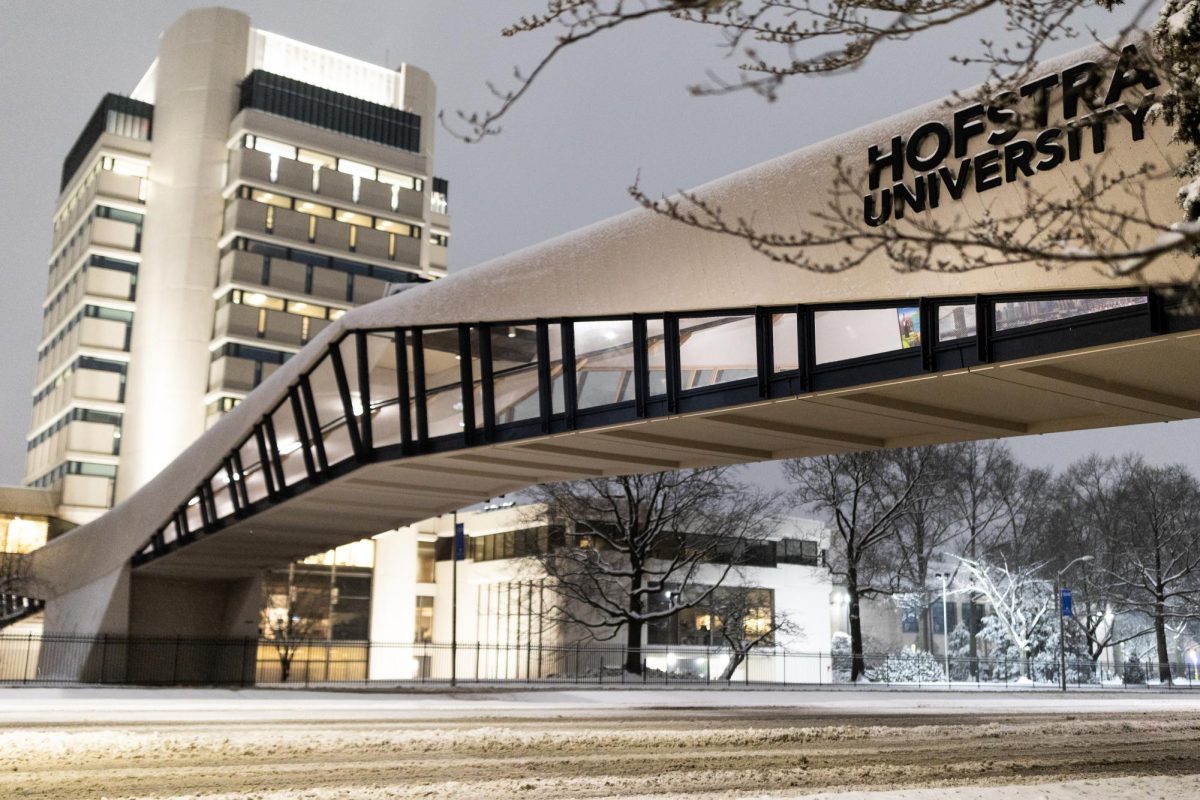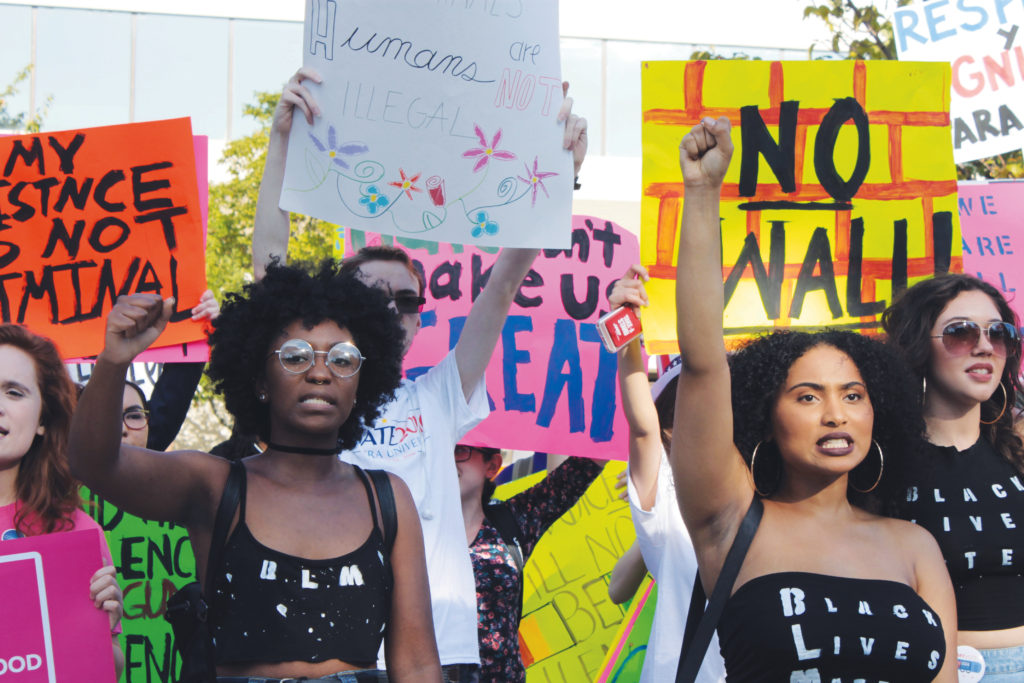
“This is the proudest I’ve ever felt as a Hofstra student. We are coming together and raising our voice for peace and justice.”
These are the words of Natasha Rappazzo, president of Hofstra’s Campus Feminist Collective (CFC) and one of the many students who used the 2016 presidential debate as a chance to speak out about the country’s most pressing matters pertinent to the upcoming election. From rising tides to black lives, the roar of the Hofstra pride highlighted exactly what the people want to see in the next President of the United States.
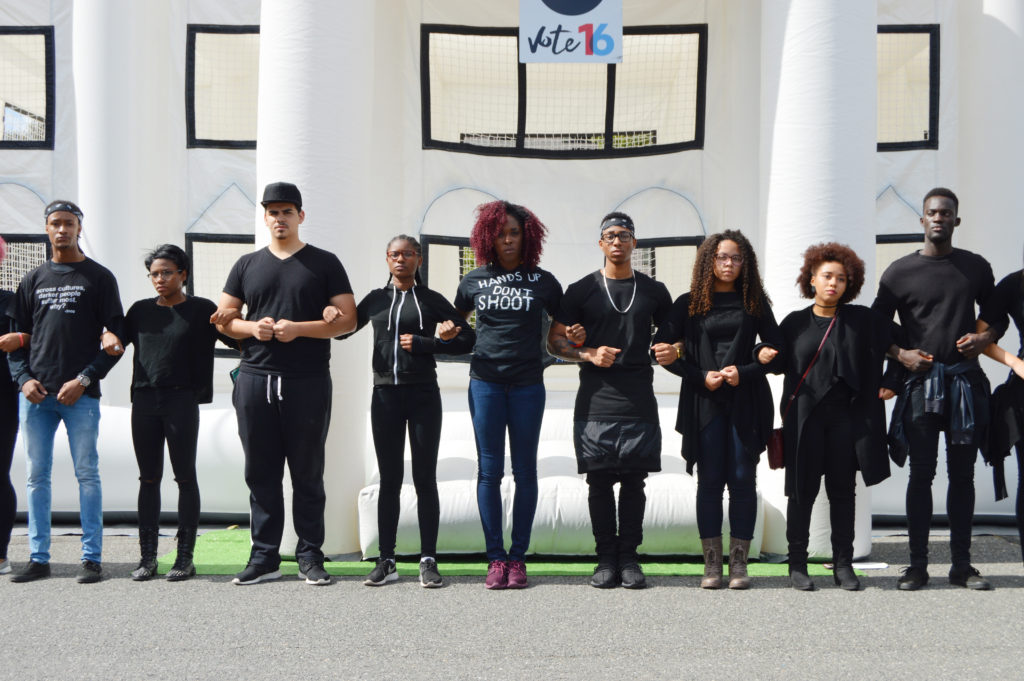
“No justice, no peace, no racist police.”
The words echoed through Hofstra’s campus as students protested the killings of black citizens by police officers. What began as simply a hashtag has now grown into the driving force that is combating racial inequality: Black Lives Matter (BLM). The protesters attempted to renounce stereotypes that have thwarted the growth of the movement and dissuaded people from joining the cause.
“We want to show that we’re supporting everybody,” Abigail Reid, president of the Caribbean Student Association (CSA) said. “We want to show the side of Black Lives Matter that isn’t violent and bring light to these shootings.”
BLM has often been criticized for violent responses to police killings. For instance, following the murder of Keith Lamont Scott on Sept. 20, the people of Charlotte, North Carolina, gathered for protests across the city. The demonstrations varied from peaceful to violent; nonetheless, it was the violent protests that gained a majority of the media coverage.
Junior psychology major Wesley Reed is a Charlotte native. She spoke of her friends from home who peacefully protested in the city for hours following Scott’s death. Reed feels the predominantly negative portrayal of BLM in the media has led to misconceptions regarding the objectives of the movement.
“That’s so not the spirit of Black Lives Matter,” Reed said. “We’re saying stop the violence. Hear us out. Police brutality is not about bad cops. It’s about this country being built on an infrastructure that is biased. You have to acknowledge that to move passed it.”
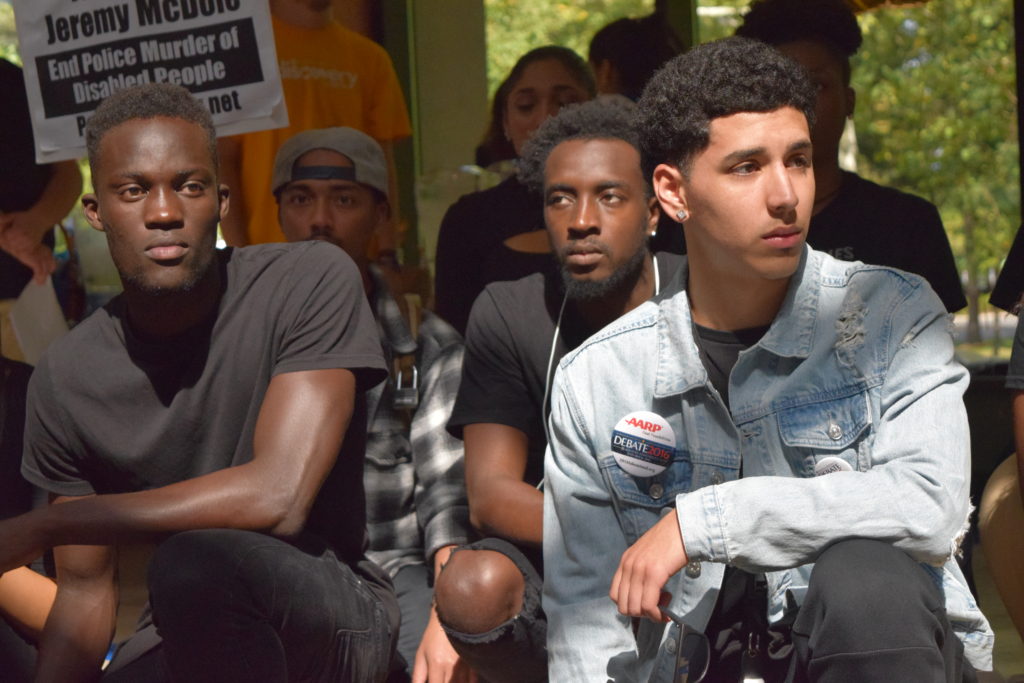
Despite her plea to lessen the negative coverage of Black Lives Matter, Reed believes violent reactions to police shootings are not entirely unjustified.
“I personally do think that violence is counterproductive, but if you look at Colin Kaepernick, he’s been peacefully protesting for how long now? And people … don’t respect it. If you’re going to treat us the same way, why shouldn’t we get violent? Do I think that’s right, no, but I don’t think it’s anyone’s place to necessarily tell people how to respond to their oppression.”
Reed questioned whether or not the issue of race would be brought up at the debate. Surprisingly, in the third segment, presidential candidates Hillary Clinton and Donald Trump were both asked how they could best improve race relations across the country. The inclusion of this topic legitimizes race as an issue that is no longer taboo.
Jasmine Spaulding, a junior psychology major, is the public relations director of the Black Student Union (BSU). Spaulding sees the progression of race relations in the U.S. and notes the recent willingness to have an open dialogue about the matter.
“I am seeing a change,” Spaulding said. “With social media the words are getting out fast, especially with the Black Lives Matter movement. It’s a slow change, yes, but we’re definitely getting there.”
As Black Lives Matter protestors called for the end of the war on black lives, women’s rights protestors declared their battle against gender oppression.
This referred to the short, and further shortened, sentencing of convicted rapist Brock Turner. Demonstrators brought up the fact that African-Americans make up nearly 35 percent of the U.S. prison population, oftentimes for petty crimes, while a white man found guilty of rape was only given a six-month jail sentence, ultimately serving only three months.
The protesting soon shifted further into the discussion of gender inequality; students addressed the topic as not only an American issue, but a global issue as well. The demonstrations illustrated the oppression of women in the United States, alluding to controversies such as the gender wage gap, abortion and the aforementioned issue of rape.
Protestors for women’s rights eventually touched on the highly debated issue of abortion, questioning why undeveloped fetuses seem to have more rights than the women who bear them.
Protestors soon turned to issues of immigration policy. It called to question who really has more rights, a fertilized egg or an illegal immigrant.
The major political parties in the country seem to be at opposite ends of the spectrum, not knowing whether to let foreigners remain residents of the U.S., or to kick them out altogether.
One student donned a sign reading, “Respeto y dignidad para todos (Respect and dignity for all),” in hopes of improving the treatment of immigrants not as illegal aliens, but as humans.
Another student contemplated why foreigners are referred to as immigrants when they come to America; however, original European colonists are recognized as revolutionaries. She held up a sign that read, “Illegal immigration is not a new problem, Native Americans used to call it white people.”
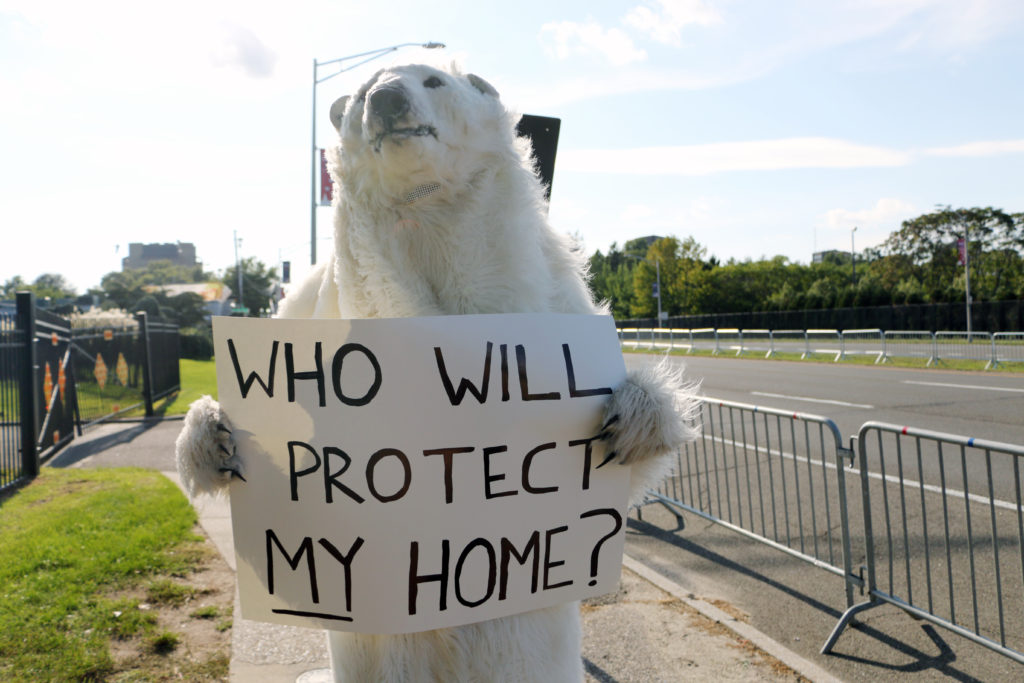
Separating from issues of race, gender and ethnicity, protestors were seen fighting for an issue that affects every living species on earth: climate change.
A majority of scientists currently believe that the root of record-breaking global temperatures is perpetuated by human activity. This past July was recorded as the hottest month on record, for the planet. Even so, many still deny its existence or disagree with its frequent branding as the world’s greatest threat. Protestors criticized climate change deniers and their constant disregard to scientific data.
“People aren’t listening anymore,” said Jennifer Stein, who protested Trump’s candidacy. “We need to make sure what is being said is true.”
Presidential candidates have the responsibility of addressing a multitude of issues when debating. It becomes a common occurrence for them to present facts and statistics that are misleading, or simply incorrect, usually to support their biases.
Hempstead resident Viviene Jones said, “Everything about this election is biased.”
Jones additionally feels that live fact-checking should be required for debates, noting that many people accept incorrect facts as truth without further research or clarification. Misleading data is oftentimes used to repress certain social issues, such as the many that marched through Hofstra’s campus.
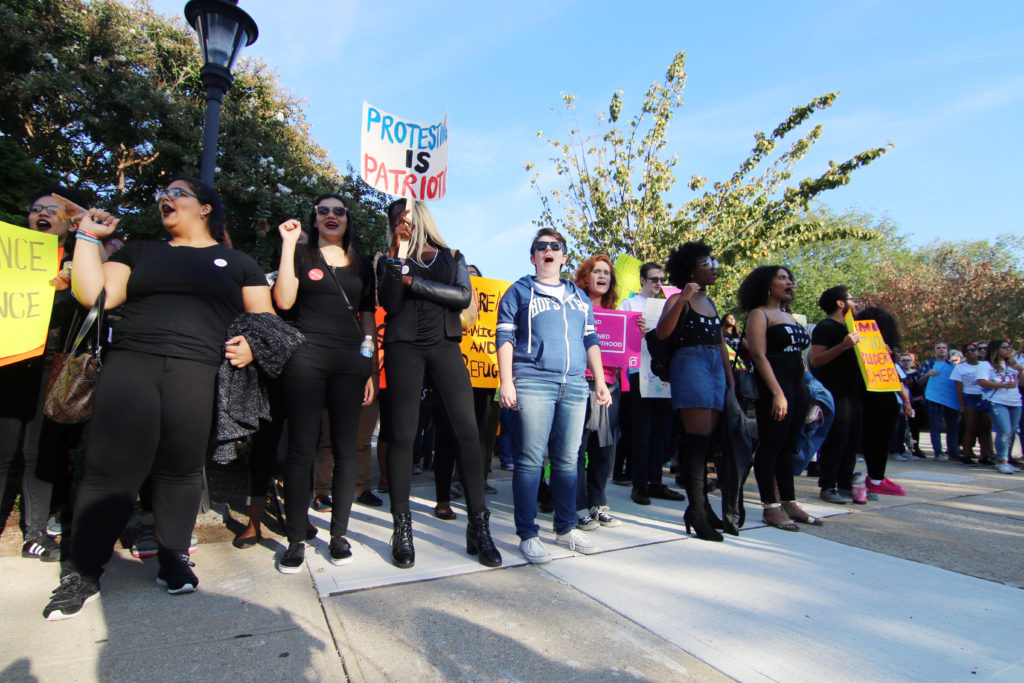
Amid the protests, it was often hard to find a specific issue that predominantly lead the demonstrations. Instead, protestors came together in unified support of each other, standing and chanting as one people, emphasizing the importance of the right to protest.
“I’m here to advocate a democracy for all Americans,” sophomore English education major Sharon Rus said. “I’m here to advocate for quality and peace.”
It seems almost a forgotten notion that the President of the United States works in the interest of those who really make the country great: the people. Regardless of differences in opinion, to exercise one’s right to protest is to recognize that change is possible. The protests at the first 2016 presidential debate proved that a song sung solo may sound sweet, but a melody will always sound sweeter. And if you ever find that you don’t know the lyrics, just sit back and listen.

